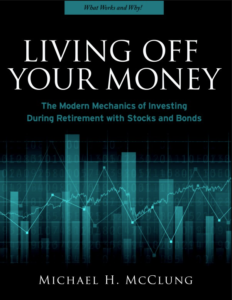Some years ago, my wife, Kate, and I were at dinner with a group of my work colleagues and our company’s CEO.
Our boss tried an experiment with the table. He drew two hypothetical stock charts on a napkin and asked us what we saw. A Rorschach test for stock nerds, you might say.
My fellow analysts and I, eager to impress our boss, searched for clever technical explanations.
“Oh, I see a ‘cup and handle’ pattern,” we might have said – or some such nonsense. We all missed the point of the exercise.
Kate, who teaches science, took a different approach. She looked at a horizontal zig-zagging chart and said, “That looks like a predator/prey diagram.”
On the second chart, Kate took a second to consider it, and said, “That looks like…faith.”
The graph looked something like this:

The table was impressed by both answers, but particularly by the second one.
The more I’ve thought about Kate’s observation, the more I believe she captured – unintentionally yet brilliantly – the essence of patient investing.
Faith?
With hindsight, it’s easy to determine which markets, companies, funds, and ETFs were great and worth holding onto through turbulence.
Historical returns, however, don’t capture the emotional roller coasters along the way.
Consider this. Had you bought shares of Wal-Mart on the 1st of September 1987 and held through the 1st of September 2017, you’d be up over 2,330% (including dividends, not reinvested). That’s an 11.22% compounded annual growth rate.
Those data points alone make it sound like it was nothing but rainbows and kittens for Wal-Mart investors over 30 years.
On the contrary!
During that period, there were 16 calendar months where the stock dropped by more than 10% and 97 weeks with 5%-plus losses. And this doesn’t include extended periods of market under-performance.
Equally important, during that three-decade period, Wal-Mart posted 26 calendar months of 10%-plus gains and 121 weeks of 5%-plus gains. A lot is made of investors selling after price drops, but my guess is most of us – certainly myself – have sold at least one good performer in order to ‘take a profit’, only to watch the stock multiply after that.
There were plenty of opportunities along the way for Wal-Mart investors to sell on panic or euphoria. It’s precisely these moments of emotional trading decisions that can derail a well-constructed investment strategy.
What it takes to stay invested
Though the impact of investment fees have on performance have been in the spotlight (and justifiably so), our poor behaviors can play an even greater role in under-performance.
This isn’t to say that a stock price plunge or a huge run-up in a stock or fund shouldn’t make us reevaluate our position. That absolutely should happen. Burying your head in the sand is not a realistic solution.
Skepticism is a healthy trait for investors. As the saying goes, the opposite of faith isn’t doubt, but certainty. Without some modicum of faith, emotion can run wild after reading a positive or negative news story, or after a substantial gain or loss in your stock or portfolio.
So, in what might we place our faith to stick with an investment – in good and bad times?
Your investment philosophy: Being comfortable in your investment approach, setting out an appropriate financial plan, and properly allocating your portfolio to various asset classes can help you weather market turbulence. Presumably you’ve created your plan with adverse market scenarios in mind. Put some faith in that strategy.
A company: If you’re a stockpicker, you might ask whether you believe a particular company you own is doing something special. Do they continue to execute on their business plan? If so, then to the extent possible diminish the stock market’s influence on your opinion of the company. Don’t check stock prices every day. Turn off real-time quotes on your broker’s homepage. Imagine you invested in a privately-run business where there was no daily price telling you its value. What would you use to measure a private company’s progress? You’d look at business fundamentals – dividends and book value per share growth, returns on equity, and so on. Use those factors to measure confidence in the company, not the stock price.
Optimism: Having invested through the financial crisis, I recall the allure of pessimistic arguments and admittedly I fell victim to some of it. A costly mistake. Bearish opinion always sounds much more refined and intelligent than the optimist saying things will turn around – even if the optimist don’t know quite how. But looking at a long-term chart of the US and UK stock markets, the pessimists haven’t seemed very smart for very long.
Historical evidence: While past performance is no guarantee of future results, there is compelling research that shows the benefits of being a patient investor. In 2013, for example, Morgan Housel dug through Robert Shiller’s U.S. market data going back to 1871. He found that your odds of generating positive after-inflation returns were as good as a coin flip in a one-year period. But over greater than 20-year periods, you would have always come out ahead in real terms. It’s not guaranteed these returns will repeat themselves, but it’s as compelling evidence as I’ve found for being a patient investor.

Source: Morgan Housel using data from Robert Shiller. 1-day returns since 1930, via S&P Capital IQ.
I’m not endorsing blind faith, but rather a healthy faith – a faith that comes with a dose of skepticism and introspection.
Being ‘actively patient’ is not simple. It’s hard to stay calm during both bull and bear markets.
With time and experience though, we can learn to filter financial results and market news to investigate the facts and discard the noise.
Bottom line
Faith seems too simple and perhaps a little naive when there are so many complicated explanations for investment performance. But the ability to keep your cool and stay focused whether times are good or bad is rare in investing.
The market is full of driven and intelligent people trying to outguess each other in the short run. Don’t play that game. Placing faith in the evidence, whether in your passive or active investing strategy, in a business or group of businesses, or in optimism alone can differentiate you from the crowd and help you achieve your long-term goals.
Todd Wenning, CFA is an equity analyst based in the United States. Opinions shared here are his own and not those of his employer. A full disclaimer can be found here. For compliance purposes, Todd cannot reply to comments below, though he welcomes any correspondence sent by email. You can read Todd’s expanding collection of dividend articles here on Monevator or check out his book, Keeping Your Dividend Edge.



